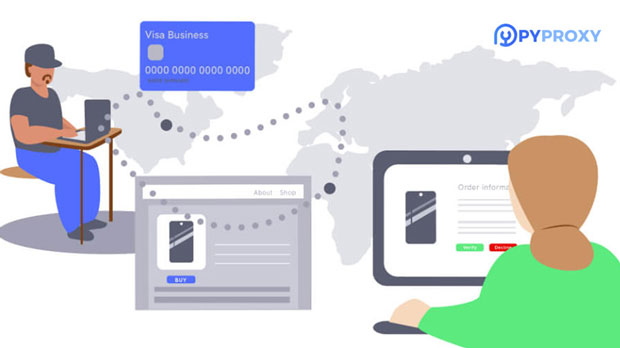In today's Internet environment, socks5 proxy, as an efficient network proxy, is widely used to protect users' online privacy and break regional restrictions. Whether for individual or enterprise users, SOCKS5 proxy software provides considerable security and flexibility. Usually, there are two common versions of socks5 proxies: the free version and the paid version. free socks5 proxy software often has significant limitations in performance and functionality due to its free nature, while the paid version performs better in terms of connection speed, privacy protection, and stability. This article will delve into the differences between these two proxy versions to help users make more rational choices1. Performance and speed difference One of the main functions of SOCKS5 proxy is to provide anonymous browsing and overcome network limitations, but in actual use, the speed and stability of the proxy directly affect the user experience. Free SOCKS5 proxies often have bandwidth limitations, especially during peak hours when connection speeds may significantly decrease. Due to the large number of free service users, servers often run overloaded, resulting in increased connection latency and even frequent disconnections. The paid version, due to its ability to provide more bandwidth resources for each user and lighter server load, usually ensures higher speeds and more stable connections. For users who require high-speed and stable connections, especially for video streaming, online gaming, or large file transfer, a paid SOCKS5 proxy is clearly a more suitable choice2. Privacy Protection and SecurityPrivacy protection is one of the main purposes of using SOCKS5 proxy. In this regard, free SOCKS5 proxies often pose significant risks. Some free proxy providers may gain benefits by recording users' online activity data, and may even sell this data to third parties, thereby infringing on users' privacy. In addition, the encryption method and security protocol of free agents are usually not as powerful as the paid version, making them easy targets for hacker attacks and posing a risk of data leakageIn contrast, paid SOCKS5 proxies provide stronger encryption protection and higher anonymity. Paid proxy services typically promise not to record user activity logs and regularly update and upgrade their security measures to prevent hacking. The paid version also provides more reliable privacy protection and reduces the risk of being tracked or monitored. Therefore, for users who are concerned about network security and personal privacy, a paid SOCKS5 proxy is a more secure choice3. Stability and availabilityStability is one of the core requirements for any network proxy service. One of the biggest issues with free SOCKS5 proxies is their instability. Due to limited server resources for free services, unstable connections often occur, and users may encounter frequent disconnections, connection failures, or high latency issues during use. This makes the free SOCKS5 proxy unsuitable for long-term use, especially for users who require stable connections for remote work, video calls, or other high demand network activities, where the quality of the free proxy falls far short of standardsPaid SOCKS5 proxies typically provide more server nodes and stronger technical support to ensure high availability of network connections. Most paid proxy service providers will provide users with multiple server nodes in different regions, and users can choose the optimal server location according to their needs. This can not only improve connection speed, but also avoid connection problems caused by overload. More importantly, the paid version of the agent will provide guarantees in terms of service quality and availability, usually with 24/7 customer service support, which can promptly solve any technical problems encountered by users4. Function and FlexibilityIn terms of functionality, paid SOCKS5 proxies often offer more customized options and advanced features. For example, many paid versions support multiple device simultaneous connections, support for multiple protocols (such as UDP and TCP), traffic obfuscation, support for specific applications such as P2P and BitTorrent, and more server options. In addition, users of the paid version can usually enjoy more advanced access control features, such as further optimizing their network experience through IP address whitelist, load balancing, dynamic IP switching, and other functionsCompared to this, free SOCKS5 proxies typically have more basic features, offer fewer options, and lack flexibility. Some free proxies do not even support common P2P protocols or impose strict restrictions on user traffic. Therefore, the paid SOCKS5 proxy has a clear advantage in terms of functionality and flexibility, and can meet the needs of different users in different scenarios5. Service Quality and Customer SupportFree SOCKS5 proxies often lack comprehensive customer support. When users encounter problems, they may only seek help through forums or communities, and the response speed and problem-solving efficiency are relatively low. This makes it difficult for users who have a high demand for technical support to encounter many difficulties during use, especially when there are connection problems or other technical failures with the agent. The lack of timely assistance may lead to a greatly reduced user experiencePaid SOCKS5 agents usually provide more comprehensive customer service, including 24-hour online customer service, technical support hotline, and detailed help documents and FAQs. Paid service providers usually respond quickly to user feedback, help solve various problems encountered, and ensure that users can use the service without interference. This is extremely valuable for enterprise users or individual users who need to solve problems efficiently6. Price difference and cost-effectivenessThe biggest advantage of a free SOCKS5 proxy is undoubtedly its "free" nature, which makes it attractive to users with limited budgets. However, as mentioned earlier, free proxies have many shortcomings in terms of speed, stability, and security. For users who require high-quality network proxy services, free proxy is often not the best choiceThe cost of paying SOCKS5 agents usually varies greatly depending on the service provided. Some agents offer different packages that are billed monthly, quarterly, or annually. Although the paid version of proxy services requires a certain fee, the high-speed, stable, and secure services it usually provides still have a high cost-effectiveness for users who need high-quality proxies for a long time. Especially for users who engage in large-scale data transmission, access sensitive websites, or engage in commercial activities, the stability and security provided by paid proxies can save users more time and resources7. SummaryOverall, there are significant differences between the free SOCKS5 proxy and the paid version in multiple aspects. Although free proxies do not require payment, there are many limitations in terms of performance, speed, privacy protection, security, stability, etc. For users who need high-quality network experience, free proxies may be difficult to meet their needs. In contrast, the paid SOCKS5 proxy provides more stable, fast, and secure services, with stronger privacy protection and customer support, making it suitable for users who have higher requirements for network qualityWhen choosing proxy services, users should weigh their own needs, budget, and requirements for network experience. For small users who only need to use proxies occasionally, a free SOCKS5 proxy may be sufficient to meet their basic needs. For enterprise level users or users who require high privacy protection and stable network connections, paying SOCKS5 proxy is undoubtedly a more rational choice
Jan 06, 2025
![arrow]()



















































